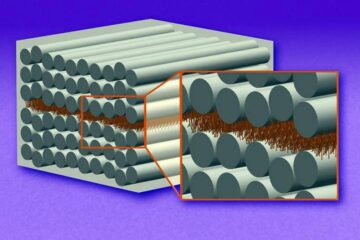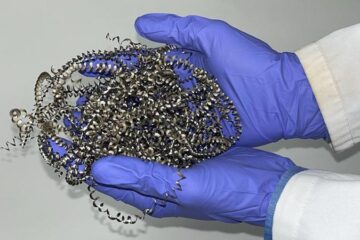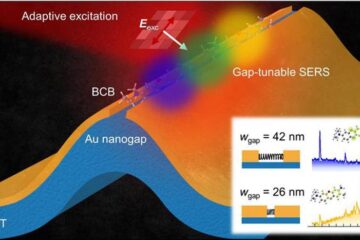A New Dawn in Scientific Research

The Science and Technology Facilities Council has been formed from the merger of the Council for the Central Laboratory of the Research Councils [CCLRC] and the Particle Physics and Astronomy Research Council [PPARC]. The Council’s remit will cover all the programmes, activities and facilities previously operated by CCLRC and PPARC, plus responsibility for research in nuclear physics which has been transferred from the Engineering and Physical Sciences Research Council [EPSRC].
Commenting on the new council Professor Keith Mason, Chief Executive Officer said, “My ambition for the new Council is to shape a future in which the science we support, the facilities we operate, the technologies we develop, and the way we interact with industry and run our business are envied both nationally and internationally.
CCLRC and PPARC both had significant achievements and a reputation for world-class research, but we can do more. We have a huge opportunity to develop a really coherent strategy for ‘big science’, to increase our influence in international organisations and make a step change in the exploitation of the resulting technology.
The Science and Technology Facilities Council has the chance to make a real difference to the competitive performance of the UK science and engineering base, and to the UK economy”.
The Council has a wide ranging science portfolio including astronomy, particle physics, particle astrophysics, nuclear physics, space science, synchrotron radiation, neutron sources and high power lasers. In addition the Council operates three internationally renowned laboratories: The Rutherford Appleton Laboratory in Oxfordshire; The Daresbury Laboratory in Cheshire; and the UK Astronomy Technology Centre in Edinburgh.
The Rutherford Appleton and Daresbury facilities are located on the Harwell and Daresbury Science and Innovation Campuses respectively, enabling neighbouring industrial and public sector businesses to develop and commercialise innovative technologies developed at each of the laboratories.
Background Notes
1.The Science and Technology Facilities Council will have a budget circa £500M.
2.The Council’s website is at http://www.scitech.ac.uk
3.The Council has in excess of 2000 staff across seven sites:
– Rutherford Appleton Laboratory, Oxfordshire
– Chilbolton Observatory, Hampshire
– Daresbury Laboratory, Cheshire
– Swindon, Wiltshire
– UK Astronomy Technology Centre, Edinburgh
– Isaac Newton Group, La Palma
– Joint Astronomy Centre, Hawaii
4.The Council is a key partner in several international scientific organisations:
– European Space Agency [ESA]
– European Laboratory for Particle Physics [CERN]
– European Synchrotron Radiation Facility [ESRF]
– Institute Laue Langevin [ILL]
– European organisation for Astronomical Research in the Southern Hemisphere [ESO]
Science and Technology Facilities Council
The Science and Technology Facilities Council ensures the UK retains its leading place on the world stage by delivering world-class science; accessing and hosting international facilities; developing innovative technologies; and increasing the socio-economic impact of its research through effective knowledge-exchange partnerships.
The Council has a broad science portfolio including Astronomy, Particle Physics, Particle Astrophysics, Nuclear Physics, Space Science, Synchrotron Radiation, Neutron Sources and High Power Lasers. In addition the Council will manage and operate three internationally renowned laboratories:
– The Rutherford Appleton Laboratory, Oxfordshire
– The Daresbury Laboratory, Cheshire
– The UK Astronomy Technology Centre, Edinburgh
The Council gives researchers access to world-class facilities and funds the UK membership of international bodies such as the European Laboratory for Particle Physics (CERN), the Institute Laue Langevin (ILL), European Synchrotron Radiation Facility (ESRF), the European organisation for Astronomical Research in the Southern Hemisphere (ESO) and the European Space Agency (ESA). It also contributes money for the UK telescopes overseas on La Palma, Hawaii, Australia and in Chile, and the MERLIN/VLBI National Facility, which includes the Lovell Telescope at Jodrell Bank Observatory.
Media Contact
More Information:
http://www.stfc.ac.ukAll latest news from the category: Physics and Astronomy
This area deals with the fundamental laws and building blocks of nature and how they interact, the properties and the behavior of matter, and research into space and time and their structures.
innovations-report provides in-depth reports and articles on subjects such as astrophysics, laser technologies, nuclear, quantum, particle and solid-state physics, nanotechnologies, planetary research and findings (Mars, Venus) and developments related to the Hubble Telescope.
Newest articles

“Nanostitches” enable lighter and tougher composite materials
In research that may lead to next-generation airplanes and spacecraft, MIT engineers used carbon nanotubes to prevent cracking in multilayered composites. To save on fuel and reduce aircraft emissions, engineers…

Trash to treasure
Researchers turn metal waste into catalyst for hydrogen. Scientists have found a way to transform metal waste into a highly efficient catalyst to make hydrogen from water, a discovery that…

Real-time detection of infectious disease viruses
… by searching for molecular fingerprinting. A research team consisting of Professor Kyoung-Duck Park and Taeyoung Moon and Huitae Joo, PhD candidates, from the Department of Physics at Pohang University…





















